#Sanandaj
Explore tagged Tumblr posts
Text
وریشه مرادی(جوانه سنه)، زندانی سیاسی به اعدام محکوم شد
Continue reading وریشه مرادی(جوانه سنه)، زندانی سیاسی به اعدام محکوم شد
#a political prisoner#human rights#Human rights organization MKN#MKN314#فعالان سیاسی#قاضی ابوالقاسم صلواتی#وریشه مرادی#وریشه مرادی(جوانه سنه)، زندانی سیاسی به اعدام محکوم شد#کژار#Varishe Moradi#Varishe Moradi (Jovane Sanandaj)#was sentenced to death#ایران-Iran#اعدام#به گزارش سازمان حقوق بشری امکیان#جنایات جمهوری اسلامی-The crimes of the Islamic Republic#جوانه سنه#جامعه زنان آزاد شرق کردستان#حقوق بشر#حقوق بشر - human rights#خبر فوری#روژهلات کردستان#زندانی سیاسی#زندانی سیاسی کُرد#سازمان حقوق بشر#سازمان حقوق بشرmkn
0 notes
Text
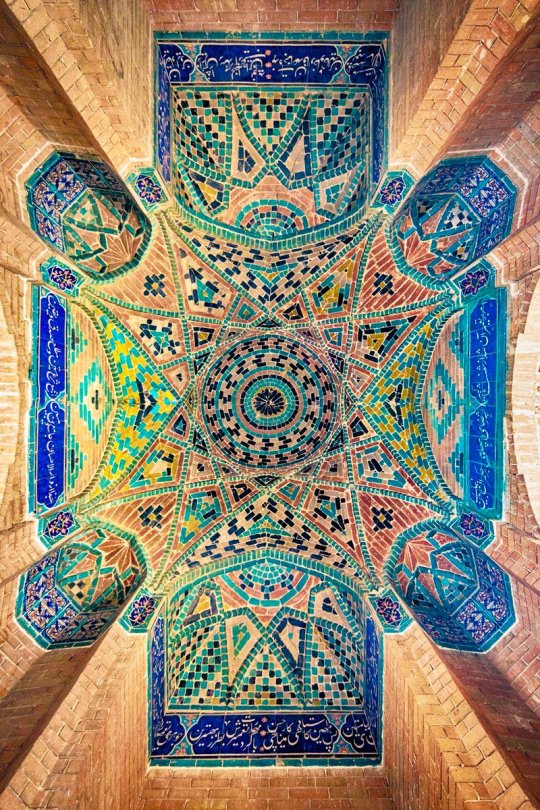
Jameh Mosque/ Sanandaj/ Iran
Photography: amirhossain mirmoini
#iran#middle east#persian#iranian#persia#farsi#travel#art#culture#architecture#mosques#persian art#persian architecture#iran art
1K notes
·
View notes
Text
Ketubbah—Sanandaj, Rojhelat (Iranian Kurdistan) ca. 1920

This GORGEOUS ketubbah is from Sanandaj!
According to the museum: "A most unusual painted Ketubah both in the form of the decoration and the aesthetic form of the text. The brilliant colors and decorative forms are typical of the area of Iranian Kurdistan, particularly the city of Sanandaj."
#jewish#judaism#jewish history#jewish art#religious objects#ketubbah#kurdish jewish#swana jews#mizrahi jews
54 notes
·
View notes
Photo

(51/54) “It’s coming. In the streets it is silent. But in the homes, where Iran still lives, the drumbeat is building. The anger is building. The impatience is building, and soon it will come out. Iran will come out. Our young women have been leading us. But we cannot let them march one-by-one into the night. Do not pass by silently if a woman is getting harassed in the street. Do not let them be called whores or sluts. Speak! Say this is not right! Your neighbor will hear you, and they will say it too. Until all of us are saying it together. The only way to take the battlefield is together. Those of us in free societies, with the freedom to speak, and write, and protest. Do not sit behind the walls of your castle. Write. Speak. Protest. We don’t need the same chants, or the same slogans. But let us come together. Even if it’s only around our dining room tables, let us come together. We cannot let them face the enemy alone. In Iran they are standing up: the students of Tehran, the truck drivers of Bandar Abbas, the oil workers of Khuzestan, the factory workers of Pooladshahr, the teachers of Sanandaj, the farmers of Isfahan. Everyone has found their own way of saying: ‘This does not work for us.’ Everyone is choosing their own words, but now let us say them all together. If you can’t find the courage to march in the streets, then just open your doors. Stand on your stoop as the protesters pass. That would be enough. If everyone who is against this regime could only do that, we’d fill all of Iran. It will be the end. These enforcers, these soldiers, these policemen, they will realize. They will finally see: that we are together, and they are alone. There is only one battle left. The fight against fear. When we win against the fear in our hearts, we win Iran. And in the words of Ferdowsi: ‘Without fighting, they will flee the scene.’”
خیابانها آراماند. اما درون خانهها، جایی که ایران هنوز زنده است، بانگ کوسها رساتر میشود. خشمها پدیدار میشوند. ایران رخ مینماید. زنان جوانمان رهبری را بر عهده گرفتهاند. نگذاریم یکایک در تاریکی شب ناپدید شوند. تنها راه پیروزی در میدان نبرد همبستگیست. ما که در جامعههای آزاد زندگی میکنیم و آزادی سخن گفتن، آزادی نوشتن، آزادی گرد هم آمدن داریم. پشت دیوارهاتان نمانید. بنویسید! سخن بگویید! خود را نشان دهید! نیازی نیست که شعارهامان، اعتراضهامان یا سرودهایمان یکسان باشند. بیایید با هم باشیم. حتا اگر پیرامون سفرهمان باشد. بیایید با هم باشیم. نگذاریم به تنهایی با دشمن ر��برو شوند! در ایران همه به پا خاستهاند. دانشآموزان تهران. رانندگان کامیونهای بندرعباس. کارگران صنعت نفت خوزستان. کارگران کارخانهی پولادشهر. آموزگاران سنندج. کشاورزان اصفهان. هر کدام راه خود را پیدا کردهاند تا بگویند: "دیگر این برای ما کارآمد نیست.” هر کسی واژگان خود را برمیگزیند، بیایید همآوا و همراه آنرا فریاد بزنیم. خاموش نمانید. بیاراده از کنار زنی که در خیابان آزار میشود، نگذرید. نگذاریم آنها را فاحشه یا هرزه بنامند. سخنی بگویید! بگویید که این کارتان درست نیست! دست از زشتکاریهایتان بردارید! همسایهتان میشنود و او نیز با شما همصدا خواهد شد. تا زمانی که همهی ما همصدا آنرا تکرار کنیم. بیایید با هم باشیم. اگر شجاعت پیوستن به راهپیماییهای خیابانی را ندارید، درِ خانههایتان را بگشایید. جلو در بایستید و تماشاگر حرکت پهلوانانتان باشید. اگر این کار را انجام دهیم، همهی ایران را پُر خواهیم کرد. این نبرد پایانی ماست: نبرد با ترس. هنگامی که بر آن پیروز شویم، ایران از آن ما خواهد شد. هنگامی که ایران بُرون آید، به معنای راستین بُرون آید، به پایان شوربختیها میرسیم. سرکوبگران، پاسدارها، نیروهای انتظامی، همه خواهند دید و خواهند فهمید که ما باهمیم و آنها تنها. همانگونه که فردوسی میگوید: همه جنگ ناکرده، بگریختند / همه دشت، تیر و کمان ریختند
281 notes
·
View notes
Text
As Iranians head to a run-off presidential election this week to replace the late leader Ebrahim Raisi, one key—and unusual—electoral issue continues to grip the country.
While previous elections focused largely on the issues of civil liberties, women’s rights, and fraught relations with the West, immigration has also featured prominently in this year’s debate. Almost every candidate in the tightly controlled showdown touched upon the influx of asylum-seekers from Afghanistan and the socioeconomic ripple effect that it has created in Iran.
Discrimination and racial prejudice against Afghans have recently been on the rise in Iran, especially as economic hardships take a toll on citizens squeezed by corruption and poor governance at home and the burden of international sanctions from abroad.
According to the country’s latest census in 2016, more than 1.58 million Afghan nationals lived in Iran—making up roughly 90 percent of the country’s migrant population. Following the Taliban takeover of Afghanistan in 2021, the latest United Nations figures now put the number of Afghan refugees living in Iran at 3.7 million.
In its 2023 country report on Iran, Amnesty International cited “barriers to education, housing, employment, health care, banking services and freedom of movement” as the major cases of discrimination against Afghans. Roughly half of the country’s 31 provinces are regions that Afghan nationals aren’t allowed in by executive mandate. These include either the more economically advantaged provinces or those at the heart of acute ethnic fault lines in Iran.
Afghanistan is one of the only three Persian-speaking countries, meaning that there is no major language barrier between Afghans and Iranians. In religious terms, Islamic practices have tied the two nations for centuries. Culturally, commonalities are manifold and the two peoples’ admiration for such relics of a shared past as the Nowruz festival or the poetry of Rumi and Ferdowsi remains ironclad.
Against this backdrop, it’s shocking that the public discourse among Iranians about Afghans fleeing the Taliban’s tyranny has become so toxic. In preserving its imagined sociopolitical boundaries, Iran’s clerical establishment has reproduced negative clichés about a vulnerable community, making it more convenient for disgruntled masses to blame them for their country’s mishaps.
A succession of hate crimes and violent acts targeting Afghan migrants, often provoked by the irresponsible rhetoric of politicians and state media, testifies to an overtly unwelcoming and intimidating environment for the desperate asylum-seekers. Security forces mistreating Afghan nationals at ports of entry and public venues through physical abuse, verbal aggression and other forms of humiliating behavior has become routine.
In the absence of accountability for the state, ordinary Iranians have also become complicit in a pattern of villainizing and mistreating Afghans. Last April, an upscale shopping center in Tehran banned Afghans from entering the mall for four days. In October, a video circulated online showing a group of men in the city of Sanandaj beating a young Afghan refugee. And last December, following the killing of a 17-year-old Iranian from the city of Meybod, an angry mob attacked a housing estate hosting Afghan refugees, setting several apartments on fire.
The teenager was reportedly killed in a street fight that implicated an Afghan migrant, and his death reignited anti-Afghan sentiments that erupt in Iran from time to time. The second-largest city of the province of Yazd, Meybod hosts nearly 12,000 Afghans; after the incident, local authorities said that they would enforce restrictions on the living conditions of the “alien residents,” including walling their housing complexes off from the rest of the city.
Iranians are economically frustrated, seeing the government as unable to address their basic needs. In a petroleum-rich and relatively wealthy country, the World Bank has reported that 28 percent of the population is living under the poverty threshold and a further 40 percent is on the verge of falling into poverty. The youth unemployment rate stands above 22 percent, and the inflation rate is over 37 percent—higher than that of war-torn Yemen, for example.
The proliferation of anti-Afghan sentiment in the public domain was reinforced by the hostile rhetoric of the Raisi administration, which weaponized a mix of nationalism and religious zeal to rally a base of conservative loyalists around an anti-immigration platform. A hashtag in Persian that reads “expulsion of Afghans is a national demand,” now trending nationally, has been promoted by hardline sympathizers of the government, who have spoken ill of Afghan migrants as manipulating Iran’s demographic makeup and usurping job opportunities.
“I think Iranians have a long history of Persian chauvinism toward Afghans, Arabs, and other regional neighbors,” said Sahar Razavi, director of the Iranian and Middle Eastern Studies Center at California State University in Sacramento. “The chauvinism obscures, for so many Iranians, those shared cultural, linguistic, and historical aspects between Afghan and Iranian societies.”
While mirroring the predispositions of far-right European parties and the U.S. Republican Party in their aversion to so-called out-groups, Iran’s hard-liners have not been shy about their denigration of Afghans as an inferior racial identity.
In last week’s presidential debate, former U.S. President Donald Trump made the demonization of migrants to the United States his key talking point. A similar dynamic can be seen playing out in Iran.
On Persian-language social media, stereotyping of Afghans as drug addicts, smugglers, violent criminals, and sexual predators is prevalent. In September 2021, when Iran’s state television aired a series called The Neighbor, the show’s producers received criticism for detailing the plight of Afghan migrants and humanizing their stories.
Spurred by lingering economic woes, the Islamic Republic insists it doesn’t have the resources to host more Afghans. According to a report published by the Danish Refugee Council, Iranian authorities have deported more than 1 million Afghan refugees since 2022. Some deportees have complained about facing maltreatment at the hands of law enforcement officers. Newer Afghan arrivals are likely to face an uphill battle as well.
“Despite their claims of liberal-mindedness and cosmopolitanism, many Iranians exhibit popular prejudice and condescending attitudes not only toward immigrants but also minority ethnic groups such as Kurds, Arabs, and Azeris,” said Mehrzad Boroujerdi, an Iran expert and Dean of College of Arts, Sciences, and Education at Missouri University of Science and Technology.
Still, Boroujerdi says there are other factors that fuel anti-Afghan hostility, such as a perception that the Iranian government recruits impoverished Afghans into militia groups in exchange for economic and social rights for them when they settle.
As in other host societies receiving large numbers of asylum-seekers, the fear of vanishing jobs or declining social mobility because of new border arrivals continues to animate anti-immigrant stereotypes. What is idiosyncratic is that in a homogenous country reeling from chronic isolation, and where the plurality of the citizens may spend their lives interacting only with other Iranians, accommodating Afghans as the only external presence has become such a daunting task.
In the absence of prudent leaders to bring reason to the debate, the Iranian public—often self-assured about its progressivism—is negating its self-styled image of hospitality and displaying the unseen contours of its racial tolerance.
11 notes
·
View notes
Text
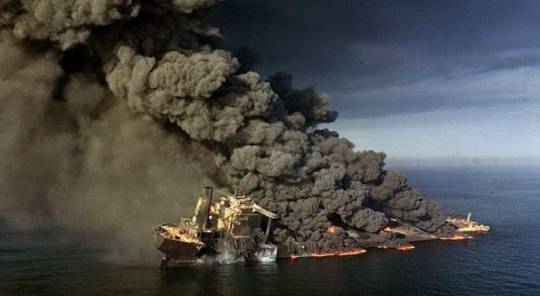
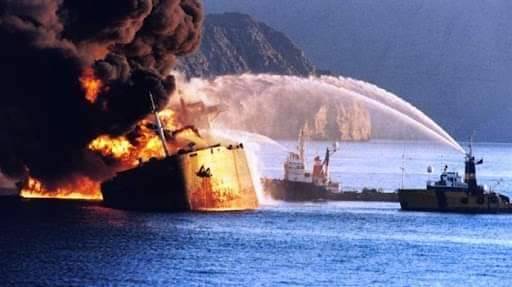

Ирано-иракская война шла 8 лет (с 1980 по 1988) и велась с крайним ожесточением. Было испробовано все, от мясных штурмов и ковр��вых бомбардироволк городов до газа табун. Ирак потерял 250000 солдат, Иран - в 2 раза больше. Примирить стороны казалось невозможным. Но война быстро закончилась, когда стороны взялись за систематическое уничтожение нефтяных структур друг друга.
В 1986 году добыча нефти в Иране снизилась на 5 процентов, а экспорт — на 8. Казалось бы, 5 и 8 процентов - это какие-то пустяки. Но Иран, который собирался воевать до победного конца, неожиданно начал задумываться.
27 февраля 1988 ВВС Ирака осуществили успешную бомбардировку нефтеперерабатывающего завода в Тегеране, а в марте того же года в результате авиаудара тяжёлых бомбардировщиков по острову Харк были потоплены два иранских супертанкера (Anaj и Sanandaj). Летом этого года иракские самолёты бомбардировали объекты иранской нефтепромышленности и недостроенную АЭС Бушер.
6 августа Иран согласился на мирные переговоры. В тот же день Саддам Хусейн объявил о победе в войне и вступлении в силу перемирия. 7 августа его условия были согласованы с Ираном. Перемирие вступило в силу с 20 августа 1988 года, и ирано-иракская война завершилась.
МОРАЛЬ
Если ведешь войну с нефтяной державой, то единственная возможность склонить её к миру - это систематическая работа с нефтянкой. Нефтяная отрасль весьма уязвима в силу своей инфраструктуры и тем, что перерабатывает горючие вещества. Ещё раз оцените 5 и 8 процентов.
9 notes
·
View notes
Text
Iran: New President Should End Abuse of Border Couriers

(Beirut) – Iranian authorities under the new president should halt their use of excessive and lethal force at the Iran-Iraq border against predominantly Kurdish kulbars (border couriers), who come from marginalized communities, Human Rights Watch and the Centre for Supporters of Human Rights (CSHR) said today.
Masoud Pezeshkian, the newly elected president of Iran, said during his presidential campaign in Sanandaj in June 2024: “It is shameful that our youth have to engage in kulbari [transporting goods across border] for a piece of bread. We must establish a border that facilitates trade, not kulbari.” Just three days after Pezeshkian’s election, five border couriers were shot at the border in Nowsud, in Kermanshah province, which led to the death of one of them, according to Kurdistan Human Rights Network.
“Marginalized Kurdish communities often turn to bringing goods over the border, legally or not, for lack of other economic opportunities,” said Nahid Naghshbandi, acting Iran researcher at Human Rights Watch. “Incoming President Pezeshkian should prioritize improving the state’s treatment of minorities, including the Kurdish border communities.”
On July 8, 2024, Human Rights Watch released an investigation into Iranian authorities’ serious violations against border couriers. On the same day, CSHR released a report that investigated the socioeconomic, legal, and human rights factors that shape the lives of Kurdish border couriers.
The research by CSHR and Human Rights Watch illustrates how Kurdish border couriers reflect broader systemic government failures in Iran’s underdeveloped border regions, the groups said. Driven by poverty, border couriers confront constant dangers from harsh terrain and lethal force used by Iranian security forces.
In June 2023, a member of the Iranian parliament’s National Security Commission announced the completion of a review of pending legislation, with proposed amendments that not only would broaden security forces’ ability to use firearms against border couriers but also the conditions under which they can do so. If passed into law, the amendments would put border couriers at even greater risk.
5 notes
·
View notes
Text
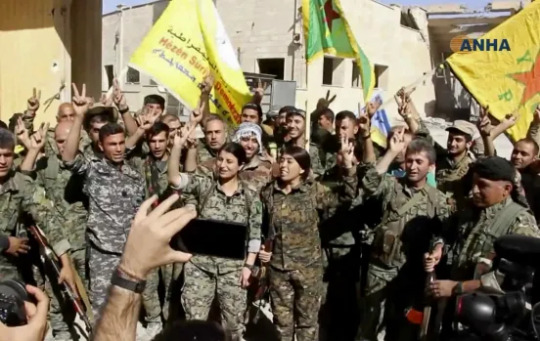

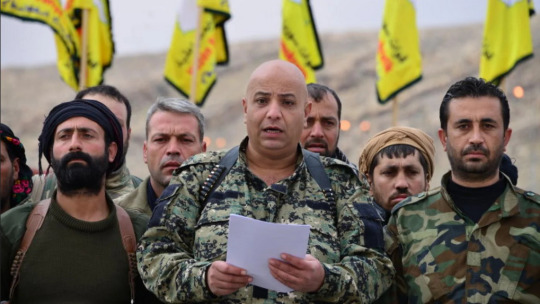
CorpMedia #Oligarchs #MegaBanks vs #Union #Occupy #NoDAPL #BLM #SDF #DACA #MeToo #Humanity #FeelTheBern
JinJiyanAzadi #BijiRojava US-backed forces seize parts of 'IS' capital Raqqa [UPDATES]
An alliance of Kurdish and Arab forces have made significant gains in their offensive to liberate the Syrian city. Human rights groups have warned of the challenges presented by 160,000 civilians still living in Raqqa…

RELATED UPDATE: U.S. troops begin pulling out of Syria, leaving Kurds without support
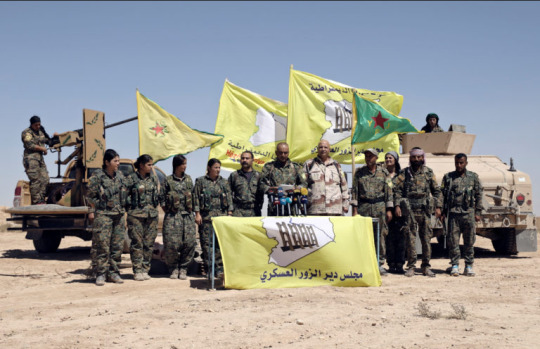
RELATED UPDATE: Arabs Across Syria Join the Kurdish-Led Syrian Democratic Forces
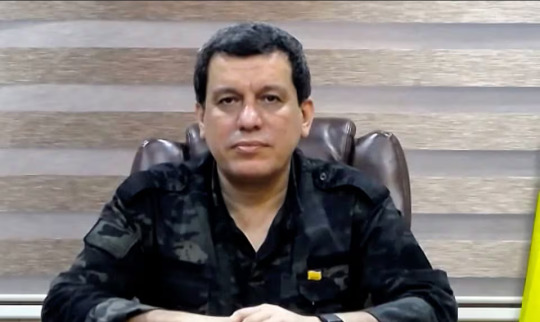
RELATED UPDATE: Exclusive: Kurdish-led Syria force vows to meet tribal demands after clash
https://www.reuters.com/world/middle-east/kurdish-led-syria-force-vows-meet-tribal-demands-after-clash-2023-09-07/

RELATED UPDATE: Report on Government Militarization in Kurdistan on the 'Jin, Jiyan, Azadi' Movement Anniversary
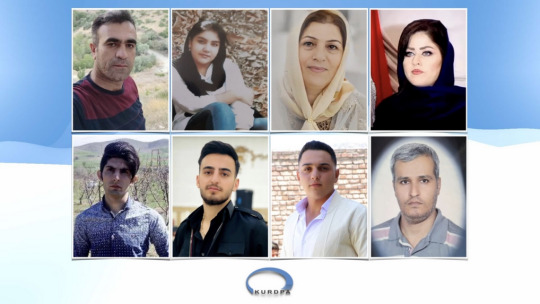
RELATED UPDATE: 27t, October 2023; The anniversary of the state murder of Eight Kurdish citizens the martyrs of the revolutionary uprising of Jin, Jiyan, Azadi in Sanandaj, Mahabad, Baneh and Tehran
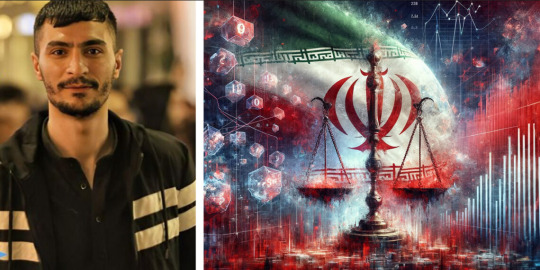
RELATED UPDATE: Another Kurdish ‘Jin Jiyan Azadi’ protester sentenced to death in Iran
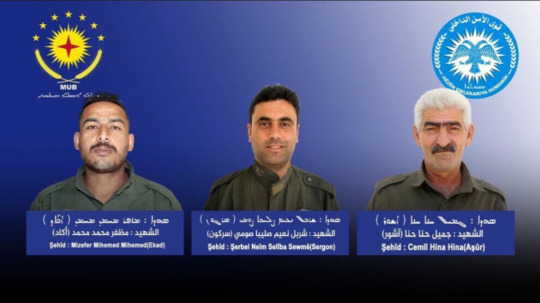
RELATED UPDATE: Turkish UCAV attacks claim the lives of three Syriac Military Council fighters in Derik

RELATED UPDATE: SDF liberates citizen, kidnapped in Raqqa city
FURTHER READING:
12 notes
·
View notes
Text
Liberté pour Varisheh Moradi, militante kurde des droits des femmes, condamnée à mort en Iran
IRAN : Les avocats de Varisheh Moradi, une militante politique kurde et défenseure des droits des femmes, ont appris le dimanche 10 novembre que leur cliente a été condamnée à mort par le pouvoir judiciaire iranien pour des accusations de "rébellion".

Membre de la Société des femmes libres du Kurdistan oriental, Mme Moradi a été arrêtée par des agents des services de renseignement iraniens dans la banlieue de Sanandaj le 31 juillet 2023 et transférée à Téhéran. En janvier 2024, après la fin de son interrogatoire et de nombreux actes de torture à son encontre, elle a été transférée du quartier 209 de la prison d’Evin au quartier des femmes où elle est détenue pour "baghi " (terme utilisé par la justice iranienne pour désigner une personne qui s’oppose aux dirigeants islamiques et prend position contre eux) en raison de son appartenance supposée à l’un des partis d’opposition au régime, en l'occurrence, le Parti pour une vie libre au Kurdistan (PJAK).
Le 10 octobre 2024, journée mondiale pour l'abolition de la peine de mort, elle avait entamé une grève de la faim pour protester contre cette peine régulièrement prononcée et exécutée en Iran, mais aussi contre sa détention prolongée, l’incertitude de sa situation, ainsi que contre le fait qu’elle soit privée de visites de sa famille et de son avocat depuis mai 2024. La détérioration de son état de santé l'avait contrainte à arrêter cette grève de la faim au bout de 20 jours.
#kurdes#kurdistan#Femme Vie Liberté#Jin Jiyan Azadi#woman life freedom#peine de mort#Abolition de la peine de mort#Droits des femmes#femmes#Femme#iran
4 notes
·
View notes
Text
"Another day of countrywide protest against starvation pensions and for decent conditions for pensioners under the Iran-regime, this time with particular focus on retired teachers.
Here's two arbitrary videos from an event in Saneh/Sine/Sanandaj of Rojhelat/NW Iran, out of several others."
#saneh#sine#sanandaj#rojhelat#iran protests 2022#iran revolution#free iran#iranian#iran#161#1312#working class#class warfare#class war#classism#classwar#humanrights#climate activists ‘may try to wreck the rollout of voter id measures at the local elections’#activist#activism#direct action#ausgov#politas#auspol#tasgov#taspol#neoliberal capitalism#australia#fuck neoliberals#anthony albanese
2 notes
·
View notes
Text

Exporter of Plastic Scrap Turbo Washing Machine in Iran
R Mech Machines LLP is a Manufacturer, Supplier, and Exporter of Plastic Scrap Turbo Washing Machine in Iran
R Mech Machines LLP Specializing in Plastic Scrap Turbo Washing Machines, Plastic Scrap Grinder Machines, Plastic Scrap Shredder Machines, Blade Sharpening Machines, Screw Press Squeezer Machines, Friction Washer Machines, and more,
we are acknowledged as a global industry leader in this field. Plastic scrap washing plays a vital role in recycling, and determining end product quality. R Mech Machines LLP, a renowned manufacturers in Ahmedabad, Gujarat, offers compact and efficient Plastic Scrap Turbo Washing Machines.
Constant assessment and enhancement of our machines showcase our innovation and engineering prowess. Our machines, including plastic scrap washers, are highly favored for their productivity and cost-effectiveness in the recycling process. Our machine uses a combination of water, detergent, and friction to remove dirt, oil, and other contaminants from the plastic.
Features:
Powerful water jets in High-Speed Turbo Agitation effectively remove contaminants from plastic scrap. An Advanced Water Recycling System minimizes water usage and environmental footprint. Energy-efficient design features technologies like Variable Frequency Drives (VFDs) and insulated chambers. Maintenance is simple with accessible components and user-friendly interfaces.
R Mech Machines LLP is a Manufacturer, Supplier, and Exporter of Plastic Scrap Turbo Washing Machine in Iran and various locations, including Tehran, Yazd, Tabriz, Mashhad, Sanandaj, Khorramabad, Hamedan, Rasht, Qom, Bandar Anzali, Khorramabad, Hamedan.
For more information, please feel free to contact us.
0 notes
Text
Five steps of Wikipedia for Monday, 5th February 2024
Welcome, vítejte, bonvenon, welcome 🤗 Five steps of Wikipedia from "Kurdistan Philharmonic Orchestra" to "1829 braille". 🪜👣

Start page 👣🏁: Kurdistan Philharmonic Orchestra "The Kurdish Philharmonic Orchestra is one of the few active classical music orchestras in Iran. It was founded in 2005 by a group of musicians in the city of Sanandaj...."
Step 1️⃣ 👣: Mehr News Agency "The Mehr News Agency (MNA; Persian: خبرگزاری مهر, romanized: Xabâr-gozâri Mehr) is a semi-official news agency of the Iranian government. It is headquartered in Tehran, and is owned by the Iranian government's Islamic Development Organization (IIDO). ..."

Image by Mehr News Agency
Step 2️⃣ 👣: Arabic "Arabic (اَلْعَرَبِيَّة, al-ʿarabiyyah [alʕaraˈbijːah] ; عَرَبِيّ, ʿarabī [ˈʕarabiː] or [ʕaraˈbij]) is a Semitic language spoken primarily across the Arab world. Having emerged in the first millennium BC, it is named after the Arab people; the term "Arab" was initially used to describe those living..."

Image licensed under CC BY-SA 3.0? by Keteracel at English Wikipedia
Step 3️⃣ 👣: Abjad numerals "The Abjad numerals, also called Hisab al-Jummal (Arabic: حِسَاب ٱلْجُمَّل, ḥisāb al-jummal), are a decimal alphabetic numeral system/alphanumeric code, in which the 28 letters of the Arabic alphabet are assigned numerical values. They have been used in the Arabic-speaking world since before the..."
Step 4️⃣ 👣: Abjad "An abjad (, Arabic: أبجد; also abgad) is a writing system in which only consonants are represented, leaving vowel sounds to be inferred by the reader. This contrasts with alphabets, which provide graphemes for both consonants and vowels. The term was introduced in 1990 by Peter T. Daniels. Other..."
Step 5️⃣ 👣: 1829 braille "Louis Braille's original publication, Procedure for Writing Words, Music, and Plainsong in Dots (1829), credits Barbier's night writing as being the basis for the braille script. It differed in a fundamental way from modern braille: It contained nine decades (series) of characters rather than the..."
0 notes
Text
Ketubbah—Sanandaj, Rojhelat (Iranian Kurdistan) ca. 1907

According to the museum: "The decorative scheme of manuscript material from Kurdistan is of a pattern seen through only in Ketubot but in piyyutim manuscripts as well, as demonstrated by three examples in the Gross Family Collection. The charming, attractive flowers and birds rendered in a highly stylized manner are common to all of them, as is the use of hollow letters for inscriptions. This is a highly unusual contract since it details the enactment of the Yibbum (Levirate marriage), the marriage of a widow to her brother-in-law as prescribed by Jewish law. The date of the marriage was the 7 February
Groom: Naftali ben
Bride: Shainhan bat Rafael"
#jewish#judaism#jewish history#jewish art#religious objects#ketubbah#kurdish jewish#swana jews#mizrahi jews
1 note
·
View note
Text
Mystical Activations with Shekinah Ma and Sanandaj - The Awakening of Dormant Energies
In the vibrant mosaic of your spiritual exploration, mystical activations present themselves as luminous threads of synchronicity, intricately woven into the fabric of your being. As you commemorate the first anniversary of embarking on this enlightening path, it is the perfect time to deeply interact with the profound reality of igniting dormant energies within the spiritual realm. Guided by the teachings of Shekinah Ma and Sanandaji, this becomes a journey of awakening.
Picture yourself standing at the crossroads of your soul's evolution, a seeker of eternal truths ready to embrace the alchemy of self-discovery. The cosmic energies pulse around you, inviting you to embark on a transformational journey that transcends the boundaries of mundane existence. In this vast tapestry, mystical activations are the key, unlocking doors to higher dimensions and revealing the secrets of the universe.
The concept of mystical activations is akin to a spiritual embodiment and mastery, an inner dance where your consciousness becomes the maestro orchestrating the symphony of your reality. Each note resonates with the divine frequencies, elevating your awareness to new heights. As you traverse this sacred path, the dormant energies within you begin to stir, like a slumbering phoenix ready to burst into flames of rebirth and initiation. TwinRay
Guided by the cosmic forces, you encounter master healers on your journey—wise souls who hold the ancient keys to unlocking the mysteries of the universe. These spiritual mentors, illuminated beings with a profound understanding of universal love, become beacons of light on your quest. They impart timeless wisdom, guiding you through the labyrinth of introspection and contemplation.
Your spiritual exploration emerges as a gorgeous mosaic of sacred pathways, each stride echoing with the harmonious hum of the universe. The core of mystical activations is understanding your role not merely as a spectator but as an architect of your reality. This understanding aligns you with enlightened humanity, contributing to the conscious evolution that fans out across the collective spirit of the cosmos. Shekinah Ma and Sanandaji's teachings play an instrumental part in guiding you along this path.
The journey of mystical activations is a sacred dance with the divine, a choreography of energies that lead to a profound union of the self with the cosmic consciousness. As you ascend through the layers of your being, you experience a divine union that transcends the limitations of the physical world. It is a merging of your essence with the eternal truths that have been whispered by the universe since the dawn of time.
In the crucible of this alchemical process, healing occurs at the deepest levels of your being. The wounds of the past, once festering and painful, are transmuted into sources of strength. The master healers, both earthly and celestial, guide you through this metamorphosis, reminding you that the scars are not blemishes but badges of honor, testaments to your resilience on this mystical journey.
The threads of synchronicity weave through your life, connecting seemingly disparate events into a tapestry of meaning. It is in these moments of alignment that you glimpse the hand of the divine orchestrating the grand symphony of your existence. The whispers of the universe become clearer, guiding you towards the next step on your path of ascension.
Venturing further into the depths of mysticism, you come to understand that the outer world is a mirror of your inner state. The concept of consciousness evolution becomes a palpable reality, reflected in your thoughts, emotions, and actions. Mystical activations are the driving forces behind this evolution, propelling you to a heightened state of awareness and spiritual mastery. Throughout this inward journey, the teachings of Shekinah Ma and Sanandaji serve as your guiding light.
The transformational journey you embark upon is not without its challenges. The crucible of spiritual fire tests your resolve, burning away the illusions that have clouded your perception. Yet, in the midst of this sacred inferno, you emerge purified and reborn, a phoenix rising from the ashes of your old self.
Divine paths unfold before you like a celestial roadmap, each step laden with the promise of self-realization. The mystical activations guide you through the labyrinth of existence, offering glimpses of higher truths that transcend the limitations of the material world. The very fabric of reality seems to shimmer with the divine as you navigate these ethereal pathways, and with each forward stride, you contribute to the cosmic evolution that transcends the boundaries of time and space.
The refinement process of your spiritual journey illuminates the boundless potential tucked within the human spirit. Amidst the crucible of mystical activations, you convert the base elements of fear, doubt, and constraint into the precious treasures of spiritual insight and comprehension. These refining flames purify your essence, liberating you from the chains of self-inflicted boundaries. As you traverse the complex choreography of ascensions, you evolve into a tangible evidence of the inherent divinity nested within every soul, awaiting its revelation through the mystic alchemy of self-discovery. The teachings of Shekinah Ma and Sanandaji serve as guiding lights in this journey.
In the symphony of the cosmos, the threads of synchronicity continue to weave their enchanting melodies through your life. Each serendipitous encounter, every unexpected turn of events, contributes to the grand orchestration of your spiritual journey. The universe whispers its guidance through the language of synchronicity, a subtle reminder that you are in harmony with the cosmic dance. Embrace these moments as gifts from the divine, affirmations that you are on the right path, and let the threads of synchronicity guide you further into the realms of mysticism.
As you reminisce about the elapsed year, appreciate the intricate pattern of your journey and commemorate the mystical activations that have brought you to this present moment. Filled with gratitude and fueled by the promise of future explorations, continue to sway with the divine, allowing the whispers of synchronicity to steer your strides on this amazing path of spiritual discovery. Under the guidance of Shekinah Ma and Sanandaji, may the forthcoming chapter of your voyage be rich with revelations, ascensions, and the perpetual quest for enlightened consciousness.
0 notes
Text
Books: Language Contact in Sanandaj
This book is a detailed study of contact-induced change in the Neo-Aramaic dialect of the Jews of Sanandaj, a town in western Iran. Since its foundation in early 17th century, the city has been home to a significant Jewish community. The Jewish Neo-Aramaic dialect of the town displays different historical layers of contact with various Iranian languages over the course of many centuries. The Iranian languages in question are Gorani, Kurdish, and Persian. Among these, Gorani has had a particularl http://dlvr.it/Syr0yF
0 notes
Text


Project2025 #TechBros #CorpMedia #Oligarchs #MegaBanks vs #Union #Occupy #NoDAPL #BLM #SDF #DACA #MeToo #Humanity #FeelTheBern
JinJiyanAzadi #BijiRojava
The Brave Women Fighting ISIS [UPDATES]
Last February, soon after the Islamic State Group, also know as ISIS or ISIL, raided the Christian villages around Tel Tamer, Syria, it was clear to Seeham that it would be up to the women to lead the charge to take back their community…

RELATED UPDATE: Meet The Brave Women Fighting ISIS In Syria

RELATED UPDATE: The Untold Story of the Afghan Women Who Hunted the Taliban

RELATED UPDATE: I was a female soldier - I killed dozens of Isis fighters with a Kalashnikov

RELATED UPDATE: YPJ: We are committed to making the dreams of our fallen comrades and our people a reality

RELATED UPDATE: Salih Muslim: Kurdish leader AP0’s call for disarmament does not apply to Rojava forces

RELATED UPDATE: Sanandaj: Three Kurdish Women’s Rights activists summoned and threatened by Security Agencies Ahead of International Women’s Day

RELATED UPDATE: ‘Jin, Jiyan, Azadi’ protests spread across Turkey on 8 March as women defy repression

RELATED UPDATE: ‘Jin Jiyan Azadi’ – women celebrate International Women’s Day with march through Manchester city centre
FURTHER READING:
#Project2025#TechBros#CorpMedia#Oligarchs#MegaBanks vs#Union#Occupy#NoDAPL#BLM#SDF#DACA#MeToo#Humanity#FeelTheBern#JinJiyanAzadi#BijiRojava
1 note
·
View note